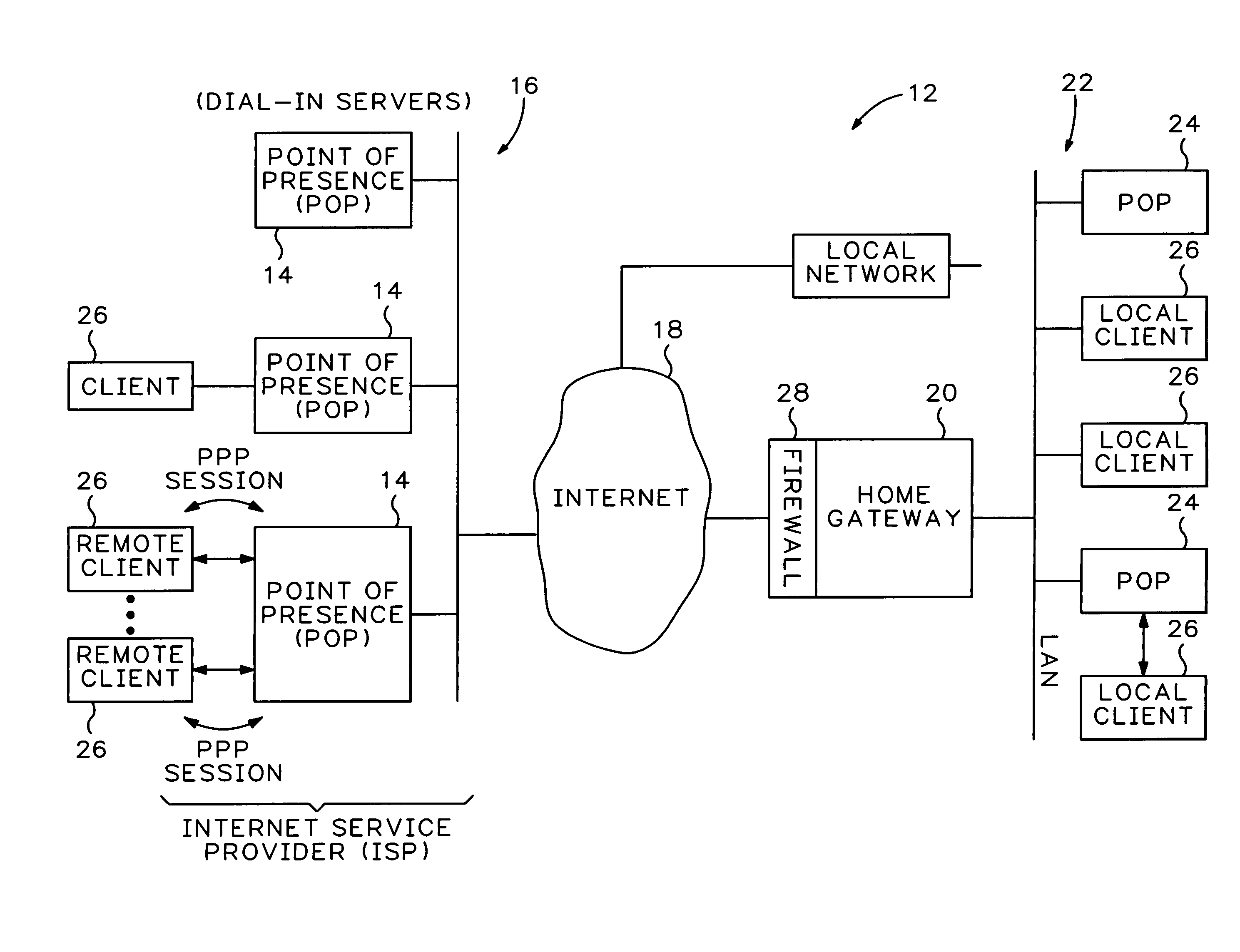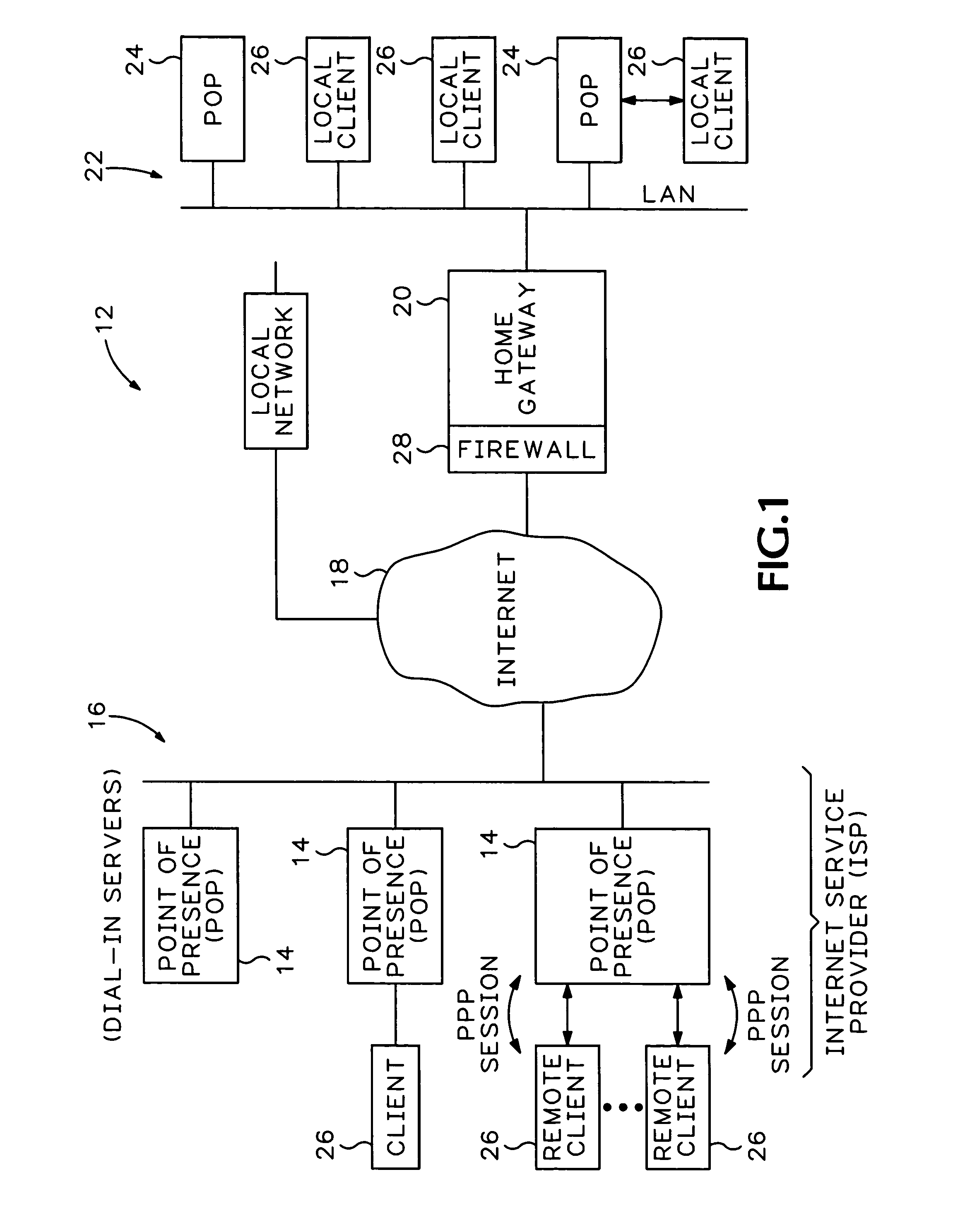Virtual dial-up protocol for network communication
a virtual dial-up and network communication technology, applied in the field of virtual dial-up systems, can solve the problem that the up server will not receive any password information, and achieve the effect of large investments in access and core infrastructur
- Summary
- Abstract
- Description
- Claims
- Application Information
AI Technical Summary
Benefits of technology
Problems solved by technology
Method used
Image
Examples
Embodiment Construction
[0027]Referring to FIG. 2, remote client 26 is coupled to an Internet Service Provider (ISP) network access server (NAS) 27 that accesses the internet infrastructure 18 via a Public Switched Telephone Network (PSTN) 30 (i.e., async PPP via modems). Remote client 32 is coupled to a NAS 27 through a port and accesses the internet 18 via an Integrated Services Digital Network (ISDN) 32 (i.e., synchronous PPP access). A private Local Area Network (LAN) 22 includes local clients 23 and is connected to internet 18 through a home gateway 20 which includes a firewall 28. NAS 27 is alternatively defined as an ISP Point of Presence (POP).
[0028]The hardware and software required to generally operate NAS 27, PSTN 30, ISDN 32, internet infrastructure 18, home gateway 20, firewall 28 and local clients 26 and remote clients 26 and 32 are all well known to those skilled in the art and are, therefore, not described in detail.
[0029]Remote client 32 accesses LAN 22 through a virtual dial-up session ac...
PUM
 Login to View More
Login to View More Abstract
Description
Claims
Application Information
 Login to View More
Login to View More - R&D
- Intellectual Property
- Life Sciences
- Materials
- Tech Scout
- Unparalleled Data Quality
- Higher Quality Content
- 60% Fewer Hallucinations
Browse by: Latest US Patents, China's latest patents, Technical Efficacy Thesaurus, Application Domain, Technology Topic, Popular Technical Reports.
© 2025 PatSnap. All rights reserved.Legal|Privacy policy|Modern Slavery Act Transparency Statement|Sitemap|About US| Contact US: help@patsnap.com



